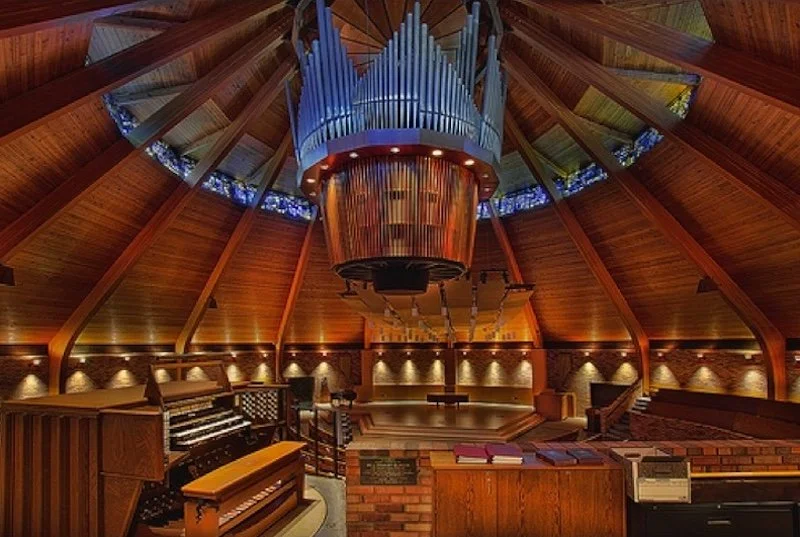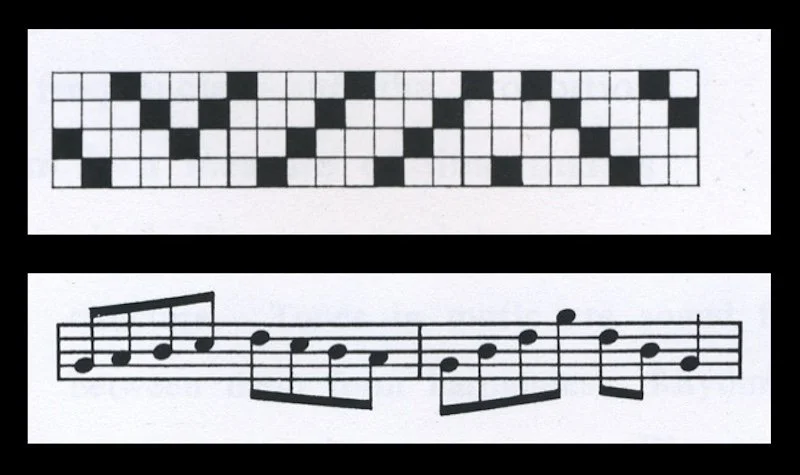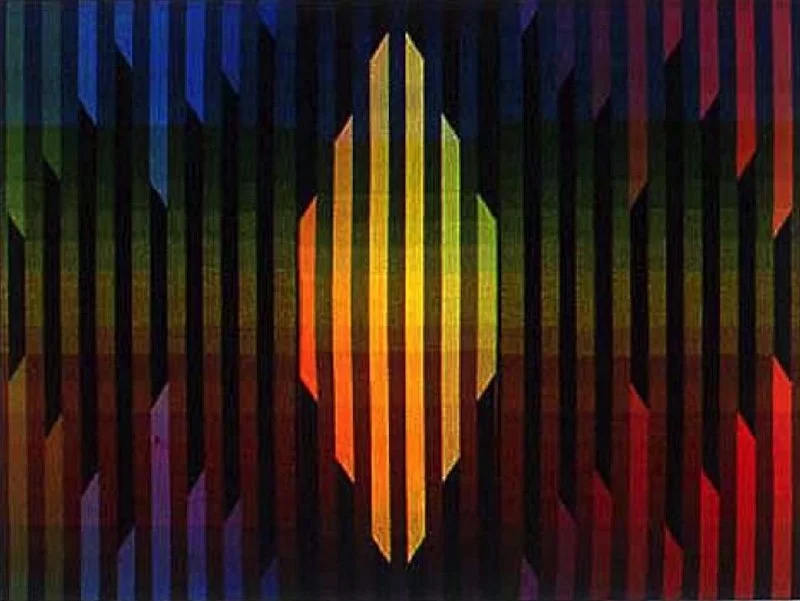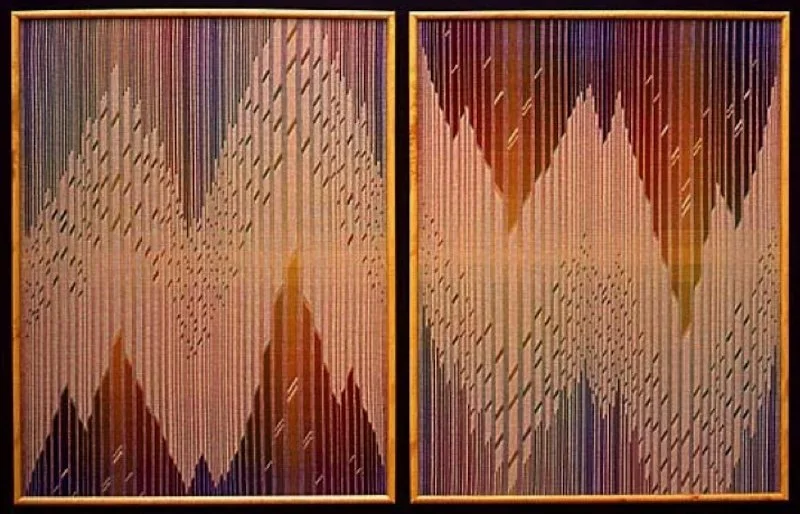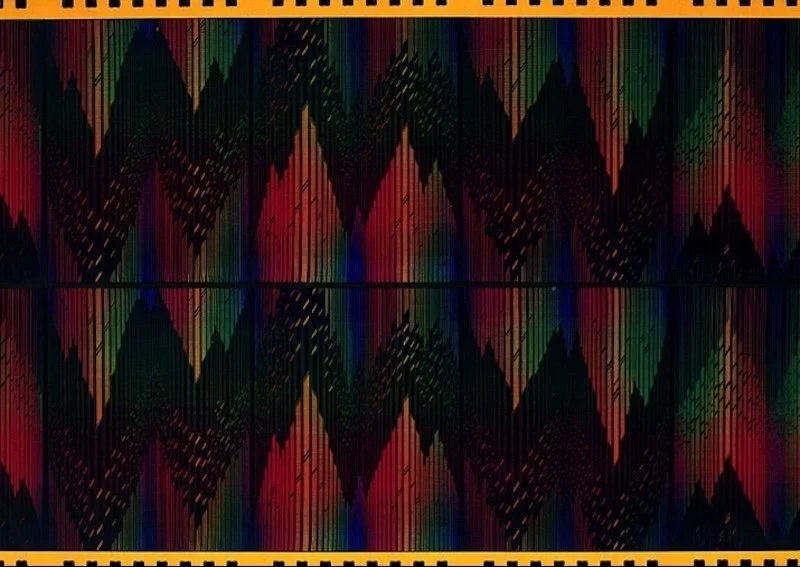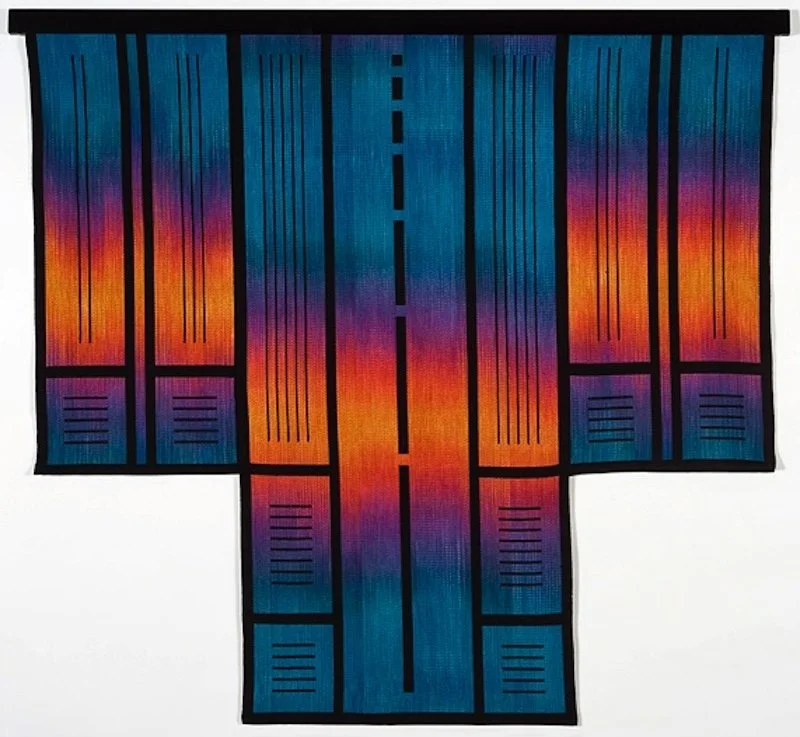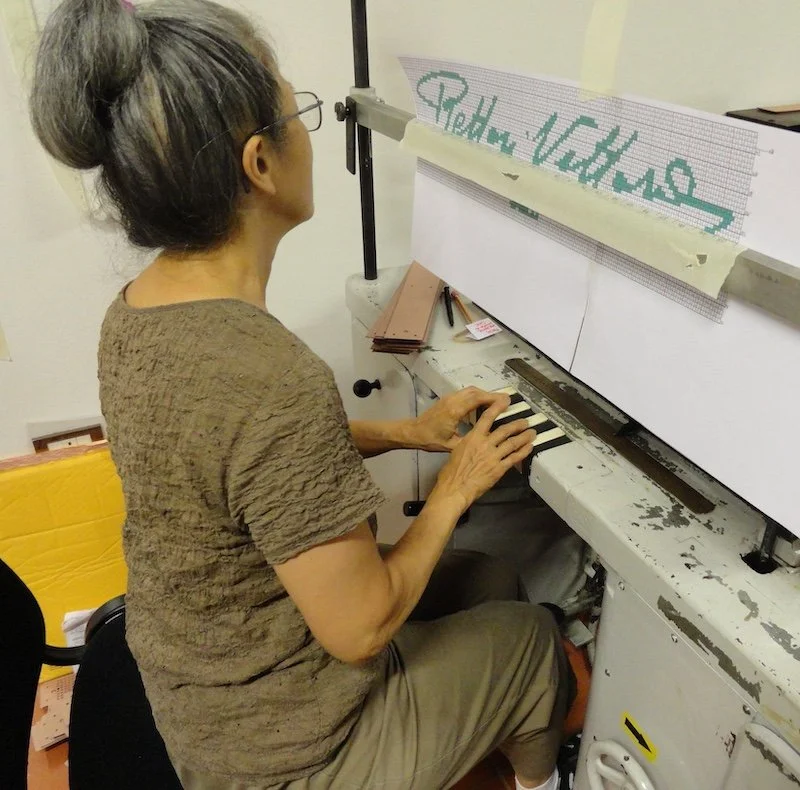My Favorite Instruments, or Pedals and Treadles
I grew up taking piano lessons starting at the age of six. I was pretty diligent about practicing my mandated half hour a day whether I wanted to or not, and kept this up long enough to be able to play Beethoven’s Moonlight Sonata in my early teens. In high school I rebelled for a couple years, but started playing again when I wanted to play contemporary music from the likes of the Beatles and Carole King.
In college I started out as a double major in art and music at Arizona State University and took piano lesons during my first year. I don’t even remember thinking that I wanted to play the pipe organ, and yet I signed up for lessons in my sophomore year. I was put into a very small room with a basic electronic organ and a graduate student as my teacher. In my first lesson she put a simple keyboard melody in front of me and told me to play it. Only one or two stops were open at that point, so the sound wasn’t particularly impressive, but as I continued playing my teacher opened one stop after another until all the stops were open and I was playing at full organ. I couldn’t believe the sound that reverberated through this tiny room and I was completely hooked in that moment.
After a year and a half when I took a break from college to save money and travel in Europe I was ready to get back to business again. I wanted to go to a small liberal arts college this time and was looking at half a dozen around the country. As it happened, there was a college fair in Chicago, where I was living at the time, with recruiters from various colleges, including Lewis & Clark College in Portland Oregon. There was a photo album of scenes from the school, which is a beautiful campus in a stunning setting. As I flipped through the pages I came to an image of the Casavant pipe organ in the college’s chapel. When I saw this I knew that I wanted to play this organ.
The pipes are suspended in a sort of large bucket from the peak of the conical building and the acoustics are virtually perfect. I applied to Lewis & Clark and happily was accepted. By this time I was planning to double major in art and biology, but wanted to pursue a minor in pipe organ performance at the same time.
When I arrived at the school I had to sign up for the classes that I wanted in a room where professors from the various departments sat at tables to talk to the students and help them register. I walked up to the music department table and told a man sitting there that I wanted to take pipe organ lessons. He said “Wonderful! Let me take you over to the chapel to see the organ right now!” He turned out to be Lee Garrett, the pipe organ professor, and he became my teacher for the next two and a half years. He stands out as one of the best teachers I have had in my life in any field, and we have remained friends to this day.
Back to the art side of my studies, I put together a self-designed major in Biological Illustration, with the idea that I would eventually go on to medical school and become a medical illustrator. Most of my art classes were focused on life drawing, printmaking, calligraphy and book binding, but I wanted to try out other media as well, so I took classes in ceramics and sculpture, among others. Since there was a weaving class offered I signed up for it without any real concept of what that might entail.
When I walked into the weaving studio the first day of class I was immediately drawn to the rows of looms and the shelves filled with cones of colorful yarn. I got a strong feeling that this was where I belonged. We were first taken through lectures in which we learned about parts of the loom, how to plan projects and how to read drafts. When I first saw a threading draft it looked very much like musical notation to me.
Our first project was a sampler with several threadings and treadlings, as well as some hand-manipulated laces. The beginners in the class were given table looms to weave on, while those who were a little more advanced got to use the floor looms. We got to choose and design our next project, and I jumped into the deep end to weave a 48” wide overshot blanket with some hand inlay. I was able to use a floor loom for this one, and as soon as I sat down and started weaving with the foot treadles it felt like an old friend. I was already well-practiced in playing the pedals on a pipe organ without looking down at my feet, so this was a natural for me.
After college I took various weaving workshops and bought my first secondhand floor loom. I taught myself how to weave doubleweave pickup and started planning projects with geometric designs and lots of color. After I finished one of my first pieces and had it hanging on my wall I looked up at it one day and realized I had put in the imagery of a pipe organ without being conscious of it.
'Triptych in E Major' 48”x62”
As the only art major in the group of pipe organ students in college I occasionally got recruited by my teacher or one of the students to create a design for the program cover of one of their recitals. One of the things that I loved about the pipe organ was the cascading shapes and sizes of the pipes, so I often used that it my drawings.
This type of geometric imagery lends itself perfectly to the technique of doubleweave pickup and I wove a number of pieces in this style over the following years.
' Asuras Spires' 40"x30" 'Rhythm in Blues' 46"x30"
In a letter that I received from Lee Garrett at one point he mentioned that my weavings reminded him of a church in Copenhagen that the architect had designed with the pipe organ as his inspiration. Several years later when I was looking through an art history book I came upon an image that I knew had to be the church that Lee had referred to.
Grundtvig Church, Copenhagen, P.V. Jensen-Klint architect, 1926
In the early 1990’s I spent three years at the University of Oregon studying under Barbara Setsu Pickett for an Master of Fine Arts in weaving. She also became a lifelong friend and another of the most inspiring and influential teachers I have had in my life. With her encouragement I pursued my interest in the relationships between weaving and music and this became the focus for my thesis work.
Since both weaving and music are based on underlying mathematical structures I followed this line of thinking and research in my studies. I learned about the Golden Proportion and Fibonacci Sequence, the motions of symmetry, tessellating patterns and fractal design. I saw ways that these ideas tied in with both weaving and music and used them in designing the weavings for my thesis project.
'Jungle Fever' 32"x20" 'Twilight Toccata' 40"x30"
As I was nearing the last months of my time in graduate school I read a book about Johann Sebastian Bach and his life. I read about a piece that he had written for the harpsichord called “Chromatic Fantasy”. Over the next few days I found that title running through my head and stopped to think about it. I realized that the word ‘chromatic’ has both a musical and a visual meaning. Two definitions of this word are -
Of, relating to, or giving all the tones of the chromatic scale
Of or relating to color or color phenomena or sensations
I found this connection fascinating and decided that I wanted to weave a visual Chromatic Fantasy. Since I wasn’t familiar with the piece I bought a recording of it and a copy of the sheet music. Looking through the written score I realized that that there were no chords, in fact there were no two notes played simultaneously. It was a string of single notes played one after the other, but played in such rapid succession that you hear the notes blur together, like broad paintstrokes of color creating harmonic relationships.
Rather than analyzing this piece in any way, I took out large sheets of graph paper and listened to the music over and over, putting down on paper what the music felt like to me. I wanted it to consist of two or more panels to relate to the aspect of music that it occurs over time. For the first series I used a full spectrum of colors against a solid tan background.
'Chromatic Fantasy' tan series 44"x70"
For the second series I used the same spectrum of colors in one layer but exchanged the solid tan background for a solid black background. I initially planned on weaving two panels for the series as well, but ended up tying on enough warp for three additional panels to have a total of five. I stretched each of the panels over foam core board and framed them individually.
'Chromatic Fantasy' black series 168"x44"
Even though I had a specific orientation and sequencing planned for the five panels I realized that they could be placed in any order and each piece could be in either one vertical orientation or rotated 180 degrees. At first I thought that there might be a couple dozen ways of arranging this grouping. But then I figured out that the equation would be 10x8x6x4x2=3,840 possibilities.
Since moving these panels, each of which was about 3 feet by 4 feet, around physically was going to be very cumbersome, I made multiple photocopies of the image, cut apart the individual components, and then could play around with the various combinations on a table top. This experimentation led me to the idea of making a flipbook, in which ten hinged stacks, each made up of the ten possible components could generate 10 billion possible compositions.
At this point I thought I was finished with this project and could start writing up my thesis and get to graduation. But one night talking to my brother, a musician in Chicago, on the phone, he suggested that what I needed to do next was create a computer-animated video of the weavings dancing to the music of Bach that inspired them.
While I thought this was an amazing idea, I also thought it light years beyond my ability to create such a thing. But we had a computer animation department at school, so I went and described the idea to Bonnie Mitchell, a woman I had taken a computer graphics class from. I was hoping she would tell me that it wasn’t realistic, especially in the time that I had left, but instead she offered to sponsor and help me in the project.
So with Bonnie’s help and very little computer experience I tackled making this video in my last two months of graduate school. I began by recording the music into the computer and plugging it into a program that digitized the music and showed it in the form of wavelengths that look rather reminiscent of the weavings.
I printed out the 40 pages of digitized music, each representing two seconds of the music and taped them together in a long sequence. From this I could analyze when individual notes in the music were playing and use that to plan and synchronize movements of the images on the screen.
I scanned the ten images of the weavings into the computer and separated them into individual components. Then using an animation program I could place the separate images on the screen and apply animated motions to them. I could fit five images across in three horizontal rows on the computer screen, which meant I had over 12 trillion possible arrangements at my fingertips. Obviously I would still be there today if I had wanted to try them all. As it was, for about two and a half minutes of video I used about two thousand of the possible combinations.
While I’ve never done anything approaching this scale of project since finishing graduate school, I continue to be inspired by music and incorporate the mathematical principles that I learned about into my weaving. I teach a workshop called Mathemagical Design in which I teach these concepts with a visual and intuitive approach and we have lots of fun cutting out paper, making rubber stamps and coloring.
'Awakening' 65"x70"
Ten years ago I had the opportunity to join Barbara Setsu Pickett for a workshop in silk weaving on old jacquard looms at the Lisio Foundation in Florence, Italy. We learned how to design on point paper, punch the cards and sew them into a long cylinder, and then weave small samples of the designs we had created. It was a great experience, and I have written about it in previous blog posts.
One of my favorite parts was punching the cards on the punching machine. There was a small keyboard with eight keys corresponding to the eight shafts of the weave structure. You had to get your eight fingers (all but the thumbs) into the right position for each particular section all at once, and then press down firmly to activate the punch. This very familiar motion felt natural to me and we were told that often keyboard players make the best card punchers.
Barbara Setsu Pickett at the card punching machine
After punching hundreds of cards they all got stitched together and then joined into a contiuous loop that fed onto the head of the jacquard loom. This is a very similar mechanism to how player pianos and other mechanized musical instruments work. Everything ends up connecting together, doesn’t it?
I haven’t played a full-sized pipe organ since my college days, but I do have a piano, and I played music with a group of women here for a number of years. I often listen to music as I am weaving and find that it feeds into the rhythm of the weaving process and that I have more energy to keep weaving with music keeping me company.
I continue to be fascinated with the combinatory possibilities in weaving and see in them a connection to the theme and variations that Bach and so many other musicians have explored. To me music and color are two manifestations of the energy of the universe that, while they can be scientifically explained, ultimately their effect on us is unexplainable.
Geometric shapes reflect the underlying order in all of life. Color (and music) are the life force itself.


